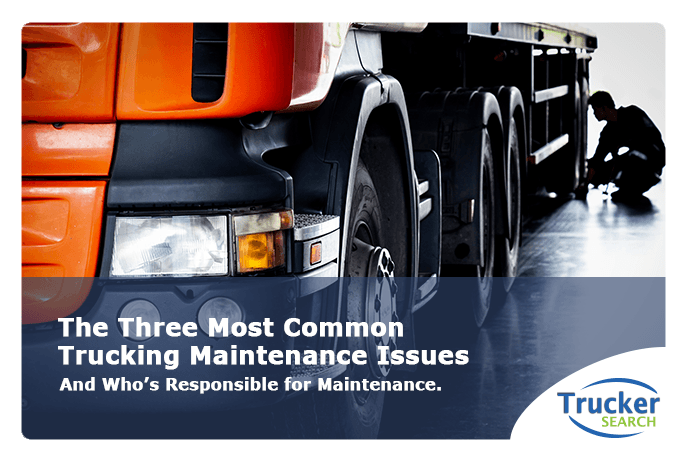Regular truck maintenance can save time, money, and even a life. It’s important for the safety of anyone who shares the road that a truck is in good working order, of course, and a truck that is regularly maintained will reduce operational costs. As the old saying goes, an ounce of prevention is worth a pound of cure. This is particularly true for big rigs. It’s significantly cheaper to perform preventative maintenance than it is to have a truck unexpectedly out of commission for costly repairs. If equipment failure caused an accident, there may also be medical costs, legal expenses, and property damage. Downtime costs a carrier an average of $448-$760 per day, per vehicle and those downtimes can cause expense all the way down the supply chain.
Common Equipment Problems That Cause Accidents
Brakes
According to FMCSA, 29% of accidents caused by truck equipment failure is due to brakes. A qualified brake inspector needs to check them regularly for air leaks, and that there are no broken parts. When a fully-loaded truck weighing as much as 80,000 lbs. needs to stop quickly, it needs considerable room and properly-working brakes. The time to find out that the brakes are bad is not when the truck is rolling along a busy road at 70 MPH.
Tires
Another leading cause of truck accidents is tires that are worn or don’t have adequate air pressure. It’s the driver’s responsibility to check for leaks, tread wear, and damage before going out on the road. Trucking companies must make sure that their vehicles have tires that have acceptable tread depth and level of wear. It only takes one bad tire to cause an accident.
Lights.
Lights not only allow trucks to see when it’s dark or when visibility is low, they’re equally as important to ensure that trucks are seen by other drivers. Drivers need to make sure lights are in working order prior to each trip.
Who’s Responsible For Maintenance?
The responsibility for truck maintenance falls on both the fleet owner and the driver. The FMCSA mandates that drivers inspect their vehicles before and after every trip. They must inspect the brakes, tires, horns, lights, and mirrors and sign a safety report stating that the vehicle is safe to drive.
Carriers have scheduled maintenance checks depending on the vehicle’s mileage, age, and type. It typically involves a brake inspection, tire pressure check and inflation, alignment and steering check, and checking lighting and electrical systems.
As a part of maintenance, trucks should also be prepared for the change in weather conditions. Winterization means using the right fuel additives, making sure heaters are working, checking the tire treads, and making sure the truck is equipped with snow chains, sand, extra windshield fluid, and other winter driving necessities. A quality carrier will follow a strict maintenance program with their vehicles for their drivers’ safety. If you’re looking for a great company that cares about drivers, look no further than Trucker Search. On Trucker Search’s website, you can post your résumé as well as search current truck driving jobs. It’s a great resource for any driver looking for a great place to work.
Sources:
https://www.elementfleet.com/news/media-coverage/the-true-cost-of-vehicle-downtime


